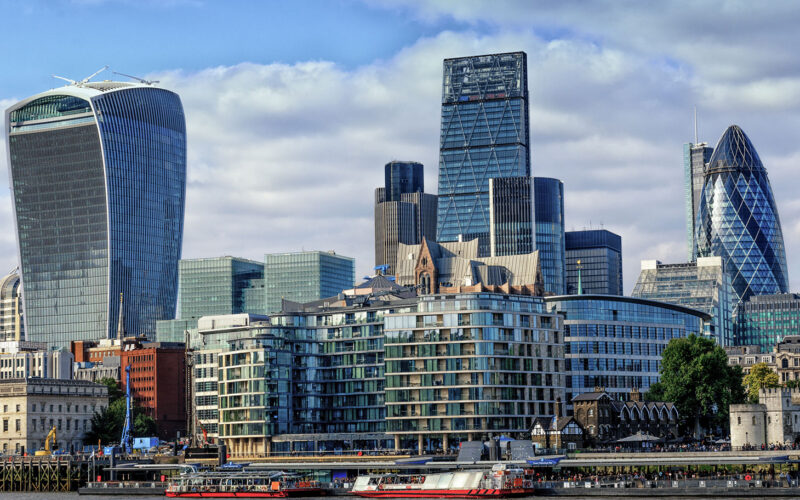- A century of sterling decline
- Dollar dominance now also waning
- Gold’s timeless value never more evident
Paris, 1924. A century ago, following on four years of horrifying warfare in Europe, the Spanish Flu epidemic that killed even more worldwide, the dissolution of the German, Austrian, Russian and Ottoman Empires, and the Russian Civil War, countries around the world gathered for a great celebration of sport.
It was cause for celebration by all. For Britain, it was also seen as an opportunity to show the world that she was still on top, or at least a match for the best athletes worldwide. The Prince of Wales attended the games, a sign to the world that British prestige, power and influence were undiminished.
By Olympic tradition, one of the most prestigious events is the 100-metre dash. A British runner, Harold Abrams, won gold. Another British runner, Eric Liddell, won the 400m. And yet another, Douglas Lowe, won the 800m.
It was quite the sweep. Britain was home to the fastest men in the world. The team returned home to a glorious reception by a country proud of its many great achievements, now including theirs. (This story is told in cinematic form in the film Chariots of Fire from 1981.)
Surely, this was confirmation that Britain was indeed still on top in global affairs. But it was fleeting.
In 1925, Britain began to sink into a deep economic depression. Unemployment began to rise. Gold reserves began to flow out, constricting credit and exacerbating economic weakness. In 1927, Bank of England governor Montagu Norman travelled to New York to ask the US Federal Reserve president, Benjamin Strong, to lower interest rates.
How would that help? Well, were the US Federal Reserve to lower rates, it would stimulate US demand for British exports, supporting the economy. Or so Norman thought.
Fed president Strong obliged and lowered rates. There followed a big expansion in US credit growth. But was this used to purchase British exports?
No. It was used to speculate on the stock market. The Roaring 20s were already in full swing by 1927. Thereafter, they entered a frenzy. Shoeshine boys and taxi drivers were famously sharing stock tips with customers in exchange for, you guessed it, cash tips.
In late 1929, it all came crashing down. The US entered its own Great Depression. Presumably unwittingly, Montagu Norman and Benjamin Strong had given the modern world its first great speculative boom-bust cycle.
With the notable exception of Imperial Japan, nearly all of the economically developed world would remain mired in economic depression off-and-on for years.
Amidst chronic privation, the political centre couldn’t hold. Things fell apart. Fascism and Communism took hold across much of Europe.
We know how that all worked out. In 1936, the Spanish Civil War broke out and Japan invaded China. In 1939, Germany invaded Poland. In 1941, Japan attacked Pearl Harbor.
When peace was finally restored in 1945, the world looked a very different place indeed. The US had become by far the world’s most powerful country. The Soviet Union had taken effective control of half of Europe, which was soon to be divided by an “Iron Curtain”, a term famously coined by Churchill.
Britain still had an empire, although one that had begun to crumble and which depended largely on US support to maintain.
The story of Britain’s 20th century decline is also told by its currency. The dollar-sterling exchange rate in 1914 was 4.87:1. By 1967, it was 2.4.
Today, it is 1.28.
As a store of value, the dollar has been by far the better currency. But far better still has been gold.
In 1914, when war broke out, gold traded at $20.67/tr oz. Today, it is some $2,400.
While sterling helps to tell the story of relative British economic decline, the dollar tells us much about the decline of unbacked national currencies generally. It has been the dominant global reserve currency for a century. And yet it has declined dramatically in value versus gold.
In recent decades, the US, UK and most all developed countries have run up enormous debts that now consume a large portion of tax revenues to service, even though taxes are historically high.
Are they to go higher still, something deeply politically unpopular? Or will governments and central banks resort to further currency devaluation instead, as they inflate their debt away through money printing?
My money is on the latter option. Over at The Fleet Street Letter, my colleague Nick Hubble and I have prepared a series of reports explaining how investors can turn this potentially chronic future currency weakness to their advantage. So, needless to say, there’s never been a better time to join us. Learn how you can become a member here.
Until next time,

John Butler
Investment Director, Fortune & Freedom



